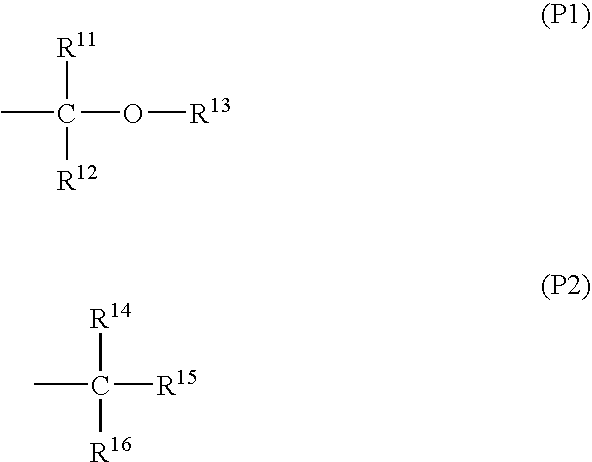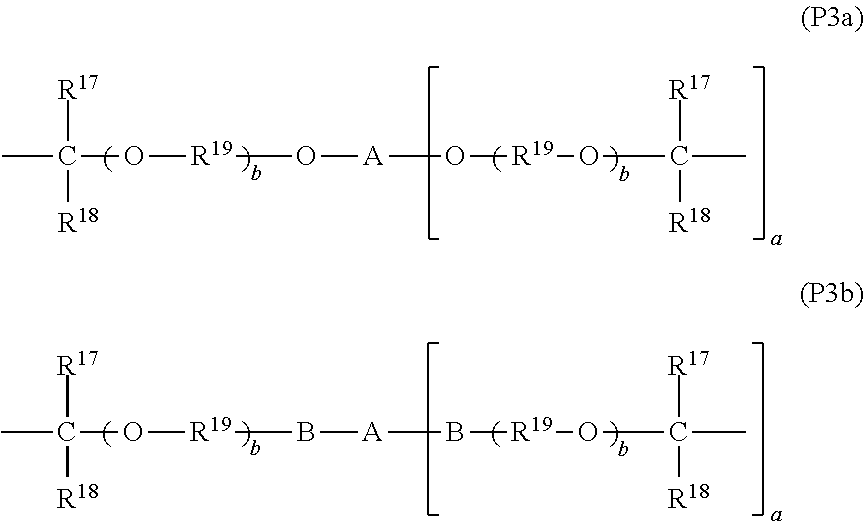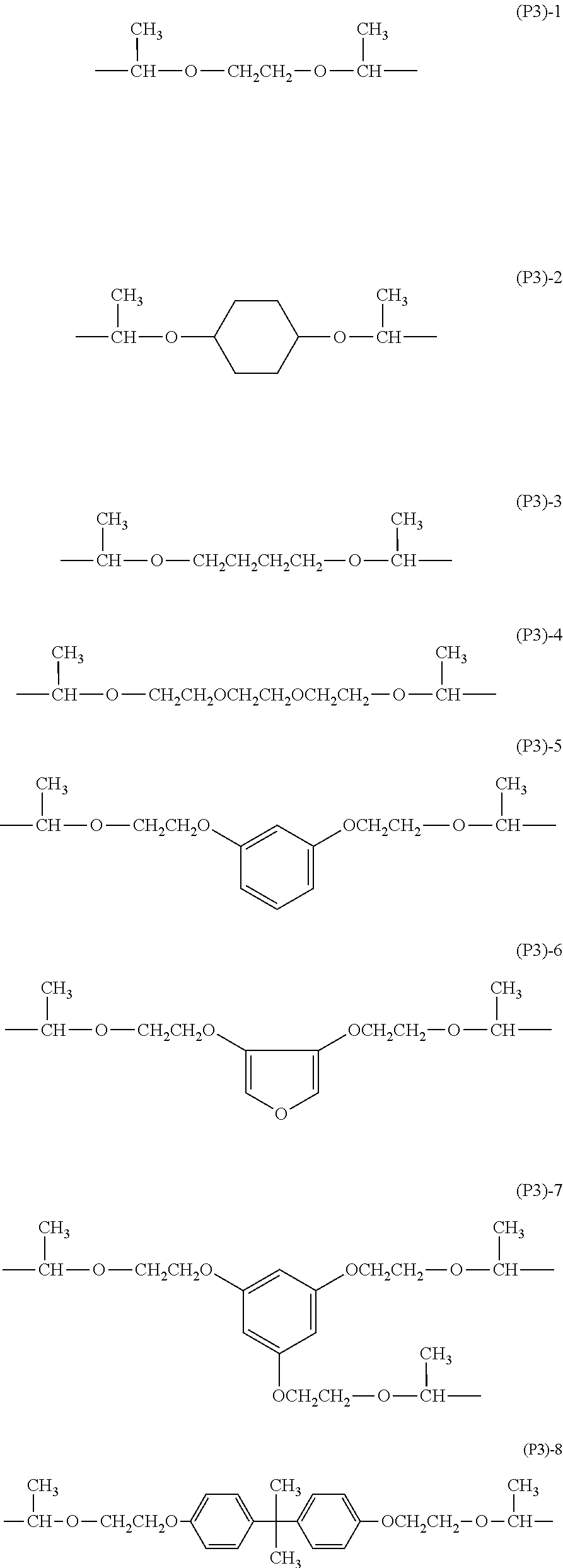Patterning process
a pattern and process technology, applied in the field of patterning process, can solve the problems of ler, too high “aspect ratio” (film thickness/feature width) to withstand deformation during development, and eventually collapse, and achieve the effect of improving ler
- Summary
- Abstract
- Description
- Claims
- Application Information
AI Technical Summary
Benefits of technology
Problems solved by technology
Method used
Image
Examples
examples 8-14
[0140]As in Example 1, resist compositions were prepared in accordance with the formulation of Table 7. To the resist compositions of Examples 1 to 7, propylene glycol monomethyl ether (PGME) was added as the fourth solvent. Pattern formation was carried out as in Example 1 by spin coating the resist solution onto a mask blank. The resulting patterns were evaluated for resolution and profile.
[0141]Table 8 reports the test results of resolution, profile (cross-sectional shape), LER, and coating property.
[0142]
TABLE 7ExampleComponents, pbw891011121314Polymer-180808080808080PAG-16666666PAG-22222222PGMEA900900900900900900900EL600600600600600600600PGME600600600600600600600γ-butyrolactone160——————tert-butyl acetoacetate—160—————dipropylene glycol——160————methyl ether acetatedipropylene glycol———160———butyl ethertripropylene glycol————160——butyl etherethylene carbonate—————160—propylene carbonate——————160Surfactant A0.070.070.070.070.070.070.07N-containing compound A0.30.30.30.30.30.30.3N-...
PUM
| Property | Measurement | Unit |
|---|---|---|
| thickness | aaaaa | aaaaa |
| thickness | aaaaa | aaaaa |
| temperature | aaaaa | aaaaa |
Abstract
Description
Claims
Application Information
 Login to View More
Login to View More - R&D
- Intellectual Property
- Life Sciences
- Materials
- Tech Scout
- Unparalleled Data Quality
- Higher Quality Content
- 60% Fewer Hallucinations
Browse by: Latest US Patents, China's latest patents, Technical Efficacy Thesaurus, Application Domain, Technology Topic, Popular Technical Reports.
© 2025 PatSnap. All rights reserved.Legal|Privacy policy|Modern Slavery Act Transparency Statement|Sitemap|About US| Contact US: help@patsnap.com



